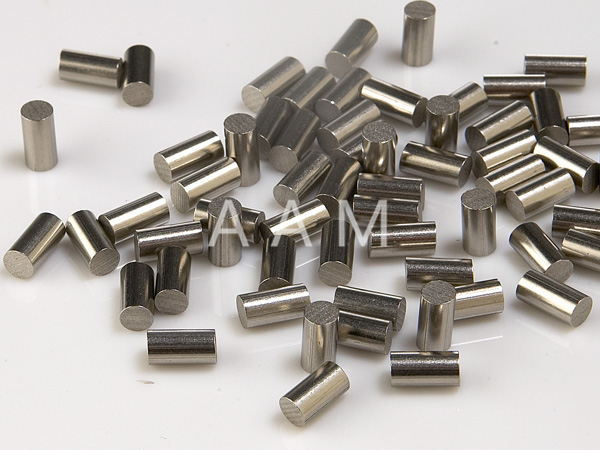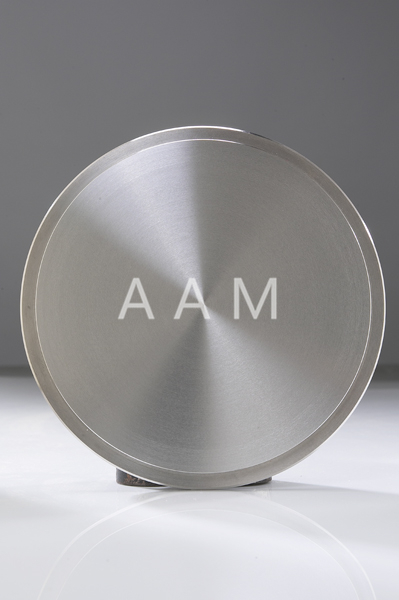Target performance index
author: Baidu encyclopedia source: Baidu encyclopedia
The target material restricts the physical and mechanical properties of the sputtered film and affects the quality of the film. Therefore, the preparation of the target material should meet the following requirements:
1. Purity: Low impurity content and high purity are required. The purity of the target material affects the uniformity of the film. For pure Al target, the higher the purity, the better the corrosion resistance, electrical and optical properties of sputtered Al film. However, the purity requirements of target materials for different purposes are also different. Generally, the purity requirements of industrial target materials are not high. However, the purity requirements of target materials for semiconductor, display devices and other fields are very strict. The purity requirements of target materials for magnetic films are generally 99.9%, while the purity requirements of indium oxide and tin oxide in ITO are not low. At 99.99%.
2. Impurity Content: Targets are used as cathode sources in sputtering. Impurities in solids and O2 and H2O in pores are the main sources of contamination. Targets for different purposes have different requirements for the content of single impurity. For example, W, Mo, Ti and other targets for semiconductor electrode wiring require less than 3*1 of U, Th and other radioactive elements. 0-9, the Al alloy target used for disc reflective film requires the content of O2 to be lower than 2*10-4.
3. High density: In order to reduce the porosity in the target material and improve the performance of the film, the target material is generally required to have high density. The density of the target material not only affects the deposition rate, the density of the sputtered film particles and the discharge phenomenon, but also affects the electrical and optical properties of the sputtered film. The better the density, the lower the density of the sputtering particles and the weaker the discharge. High density target material has the advantages of conductivity, good thermal conductivity and high strength. Using this target material, the sputtering power is small, the film forming rate is high, the film is not easy to crack, the service life of the target material is long, and the resistivity of sputtered film is low, the transmittance is high. The density of target depends mainly on the preparation process. Generally speaking, the density of casting target is high and the density of sintered target is relatively low, so increasing the density of target is one of the key technologies of sintering target.
4. Uniformity of composition and microstructure and target composition are important guarantees for stable quality of coating, especially for alloy target and mixed target with multi-phase structure. For example, in order to ensure the film quality, the target In2O3-SnO2 composition is required to be uniform, 93:7 or 91:9 (molar ratio).
5. The smaller the grain size, the more uniform the thickness distribution and the faster the sputtering rate. The target material produced by our company has the advantages of high density, high purity, high machining precision, fine grain and uniform structure.
1. Purity: Low impurity content and high purity are required. The purity of the target material affects the uniformity of the film. For pure Al target, the higher the purity, the better the corrosion resistance, electrical and optical properties of sputtered Al film. However, the purity requirements of target materials for different purposes are also different. Generally, the purity requirements of industrial target materials are not high. However, the purity requirements of target materials for semiconductor, display devices and other fields are very strict. The purity requirements of target materials for magnetic films are generally 99.9%, while the purity requirements of indium oxide and tin oxide in ITO are not low. At 99.99%.
2. Impurity Content: Targets are used as cathode sources in sputtering. Impurities in solids and O2 and H2O in pores are the main sources of contamination. Targets for different purposes have different requirements for the content of single impurity. For example, W, Mo, Ti and other targets for semiconductor electrode wiring require less than 3*1 of U, Th and other radioactive elements. 0-9, the Al alloy target used for disc reflective film requires the content of O2 to be lower than 2*10-4.
3. High density: In order to reduce the porosity in the target material and improve the performance of the film, the target material is generally required to have high density. The density of the target material not only affects the deposition rate, the density of the sputtered film particles and the discharge phenomenon, but also affects the electrical and optical properties of the sputtered film. The better the density, the lower the density of the sputtering particles and the weaker the discharge. High density target material has the advantages of conductivity, good thermal conductivity and high strength. Using this target material, the sputtering power is small, the film forming rate is high, the film is not easy to crack, the service life of the target material is long, and the resistivity of sputtered film is low, the transmittance is high. The density of target depends mainly on the preparation process. Generally speaking, the density of casting target is high and the density of sintered target is relatively low, so increasing the density of target is one of the key technologies of sintering target.
4. Uniformity of composition and microstructure and target composition are important guarantees for stable quality of coating, especially for alloy target and mixed target with multi-phase structure. For example, in order to ensure the film quality, the target In2O3-SnO2 composition is required to be uniform, 93:7 or 91:9 (molar ratio).
5. The smaller the grain size, the more uniform the thickness distribution and the faster the sputtering rate. The target material produced by our company has the advantages of high density, high purity, high machining precision, fine grain and uniform structure.






